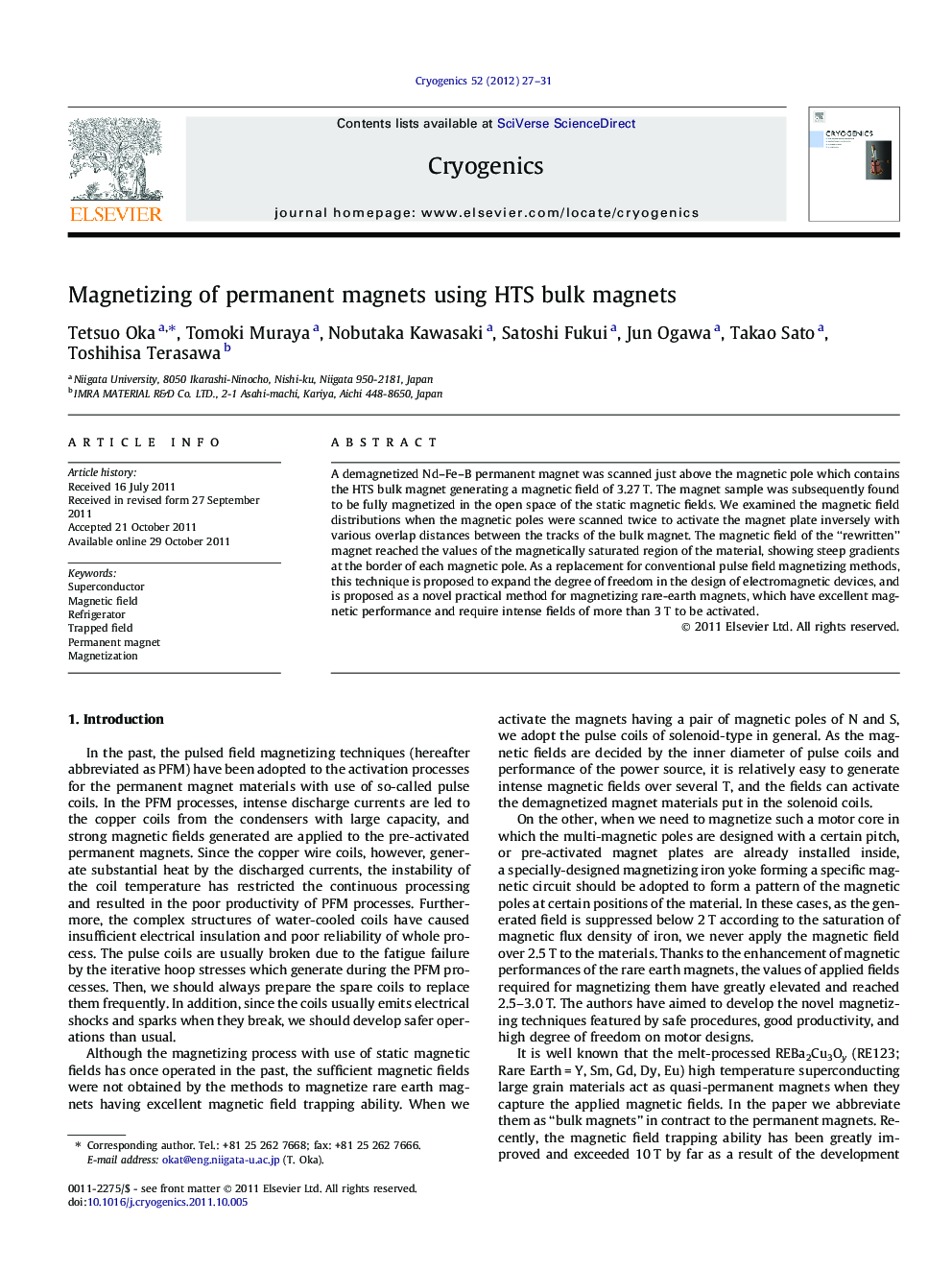| Article ID | Journal | Published Year | Pages | File Type |
|---|---|---|---|---|
| 1507764 | Cryogenics | 2012 | 5 Pages |
A demagnetized Nd–Fe–B permanent magnet was scanned just above the magnetic pole which contains the HTS bulk magnet generating a magnetic field of 3.27 T. The magnet sample was subsequently found to be fully magnetized in the open space of the static magnetic fields. We examined the magnetic field distributions when the magnetic poles were scanned twice to activate the magnet plate inversely with various overlap distances between the tracks of the bulk magnet. The magnetic field of the “rewritten” magnet reached the values of the magnetically saturated region of the material, showing steep gradients at the border of each magnetic pole. As a replacement for conventional pulse field magnetizing methods, this technique is proposed to expand the degree of freedom in the design of electromagnetic devices, and is proposed as a novel practical method for magnetizing rare-earth magnets, which have excellent magnetic performance and require intense fields of more than 3 T to be activated.
► The rare earth permanent magnet material is capable of being fully magnetized with use of HTS bulk magnet. ► Two-way scanning of bulk magnet showed us the possibility of uniform magnetizing. ► The magnetic field was rewritten by inverse fields, resultantly showing a steep slope 0.05 T/mm. ► The static field scanning of bulk magnets is applicable to multi-pole magnetizing processes for motor armatures.
